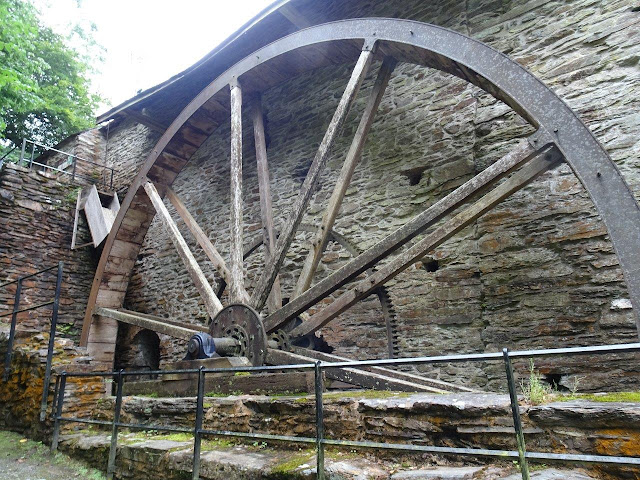On my drive from Bangor, Wales, to my next stop, I drove past this building and decided to turn around and check it out. I was not sure what it was, but it was old and big, so worth a stop, and it wasn't even raining today!
This furnace was built in 1755 and produced up to 150 tons of iron each year. That might not sound like much, but it was a lot for that time. This image gives some history. Note that the village it is in is called Furnace!
The foundry was abandoned in 1810, and later became a sawmill. It was renovated in 1988 as a historical furnace. I was the only person visiting, but there are a lot of explanatory signs.
The water wheel that powered the foundry's bellows to produce a fire hot enough to melt iron ore.
The other side of the building, showing the opening for the main furnace.
This waterfall barely fits into the photo because it is so tall. Very impressive, and yet cars just keep driving past in on the nearby roadway!
If you walk around the opposite side of the building, you can see the furnaces that produced iron from iron ore.
Remains of the main furnace is behind this screen.
A very hot fire was originally made from charcoal, but then later coal was used. The big wheel operated two bellows--one pushed air out, while the other sucked it in at the same time. This produced a hot enough fire to melt iron ore.

















No comments:
Post a Comment